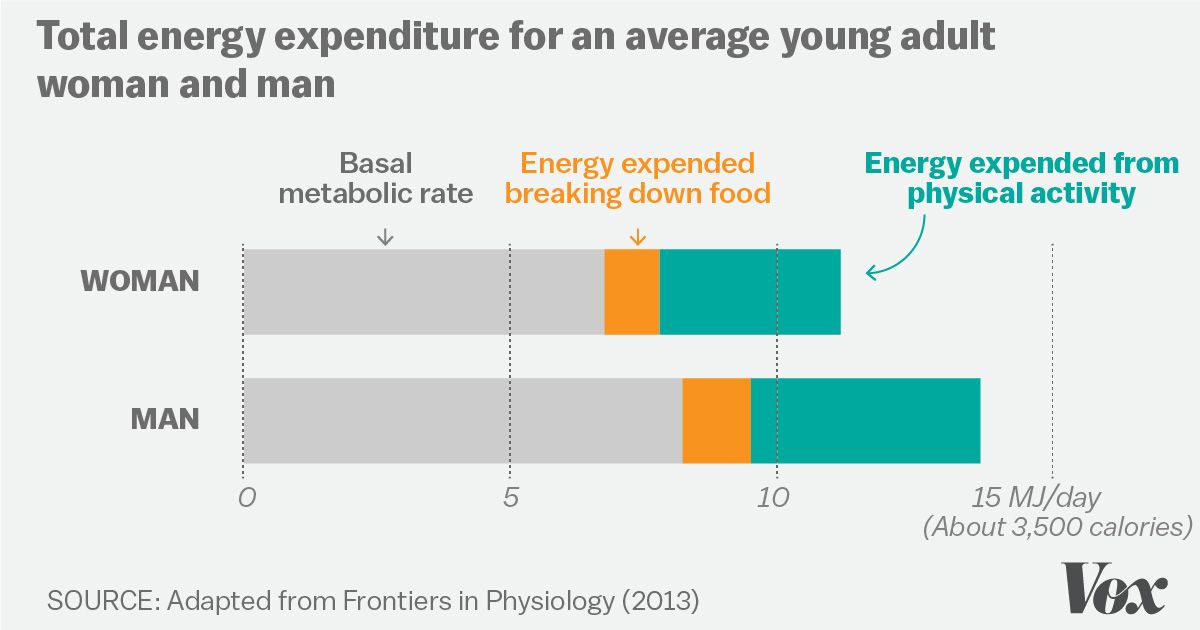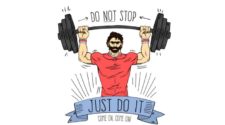Counting calories can seem extremely daunting if you’ve never done it before. Tracking every food and drink you consume can seem daunting, but it can also be a great way to keep on top of your health and fitness. Not only this, but it could be the secret to getting that body you’ve always wanted. Are you looking to build muscle, burn fat or simply improve your performance? Then calorie counting could be for you. Let’s look at some of the ins and outs to see if calorie counting can work for your goals and lifestyle.
What affects how many calories you need?
There are several factors which determine your daily caloric requirement such as:
- Gender
- Age
- Body composition
- Physical activity
- Nutrition
- Genes
- Climate
- Nervous system
- Digestive system
- Endocrine system (hormones)
There are other things that could be added to this list but generally, for counting calories, we only use the first four. The other four factors are also significant, but not as much as the first four. Woman need less calories than men just as lighter people need less calories than heavier people. This is the same between older and younger people, sedentary and active, and less and more muscle mass. Maintaining muscle mass is extremely important for maintaining a fast metabolism. The more muscle you have; the faster your metabolism. It’s not just dependant on your size but what that size is made of.
How do you expend calories?
Now we know what affects the amount of calories you need, the next step is to understand where we spend our calories. Usually, there are three main energy consumers.
1. Basal metabolic rate (BMR): This is the amount of energy spent at rest (sleeping, doing nothing, just living) to maintain your body functions – breathing, heart, digestion, etc. For active people, this makes up about 40 – 50% of your total calorie requirements, but for sedentary people, it can make up to 80% of your daily energy consumption. Interestingly, the brain and liver consume about half of the basal metabolic rate.
2. The thermic effect of food: This can sound complicated, but it’s actually pretty simple. Essentially, this is the amount of energy it takes to digest food. The average amount of calories this burns can add around 10% to your BMR. Most of the energy comes from processing protein in the diet. You don’t need to take this into account when counting calories.
3. Activity level: This is the amount of energy needed for daily activities – both mental and physical. This level is highly variable and can range from adding 20% to 150% to your BMR. For example, there would be big difference between the amount of calories burned by a manual worker, a professional athlete and an office worker who never exercises.
Methods
There are several methods to determine the amount of calories you need each day. Most of them are quite complex and can only be performed in special laboratories. This means we need to look at simpler and easier methods. All these techniques can be used to measure your daily caloric requirements.
Counting Calories
It is recommended that you count all the calories in the food you eat for two straight weeks. If your weight doesn’t change, then this is the amount of calories you need to maintain your current body weight. If you start losing weight, then you need to eat a little more calories to maintain your body weight. You can calculate your calories using paper or apps such as MyFitnessPal.
Calculating Calories
The first thing you need to do is get used to calculating calories before you start adjusting anything. There are a number of calculation methods, and the internet has plenty of calculators. Mostly, the calculators work by figuring out your BMR, and then adjusting your daily caloric requirements based upon your activity level. The more active you are, the more calories you need. The basic calculation is your basal metabolic rate multiplied by your activity level. Let’s look at a few ways that you can calculate your BMR.
1. Your current weight in kilograms multiplied by 22 for women or 24.2 for men. This calculation may not be completely accurate as it only considers your weight, ignoring the other influencing factors. However, this can be a good figure to start off with and you can adjust accordingly later.
2. Harris – Benedict equation. This is the most popular and most widely used formula. It includes a number of factors affecting BMR.
a. For a woman 655.1 + (9.56 x weight kg) + (1.85 x height cm) – (4.68 x age in years).
b. For a man 66.47 + (13.75 x body weight in kg) + (5 x height cm) – (6.76 x age in years).
c. For a men (imperial) 66 + ( 6.2 × weight in pounds ) + ( 12.7 × height in inches ) – ( 6.76 × age in years )
d. For a women (imperial) 655.1 + ( 4.35 × weight in pounds ) + ( 4.7 × height in inches ) – ( 4.7 × age in years )
This equation may not be accurate for people with a substantial amount of muscle or fat on the body. Sometimes it’s stated that this formula has been revised and updated. This was done by Shizgal and Roza (Roza AM, Shizgal HM.). However, many people still use the original formula. The updated equation should look like:
a. For a woman 447.593 + (9.247 x body weight in kg) + (3.098 x height cm) – (4.330 x age in years);
b. For a men 88.362 + (13.397 x body weight in kg) + (4.799 x height cm) – (5.677 x age in years);
3. Those who know their fat percentage can try the Katch-McArdle equation.
For both women and men: 370 + (21.6 x lean mass (fat free mass) in kg) or 370 + (9.79759519 x lean mass in pounds)
To ensure these calculations are completed accurately, you can use online calculators, but they are mainly based upon these equations which you can complete yourself.
Activity Level
When you’ve worked out your BMR, the next step is to choose your activity factor. There are lots of ways to work this out, but this is the best formula:
- 1.2 – sedentary lifestyle, no regular training
- 1.375 – easy exercise, sport 1-3 times per week
- 1.55 – moderate activities, exercise, sport 3-5 times per week
- 1.725 – very active, hard training, sport 6 – 7 times per week
- 1.9 – very hard work, physical activities even 2 times per day
Multiply your BMR by these numbers depending on which suits you best. Be careful not to overestimate or underestimate yourself. Be truthful, because lifting a bottle or fork doesn’t quite count as physical activity…
Government Recommendations
Another option of how to calculate calories is to look at your government recommendation. However, it’s hard to give advice on this area as each region is different. The climate and environment of each country can affect your BMR and therefore how many calories you need overall.
At the end of the day, you’ll need to continually make adjustments in order to find the right level for you. If you eat unhealthily, the best thing to do at the start is to simply eat healthier. Once healthy eating becomes your regular lifestyle and you still want to kick your health into the next gear, then you may want to consider counting calories.









Leave a Reply